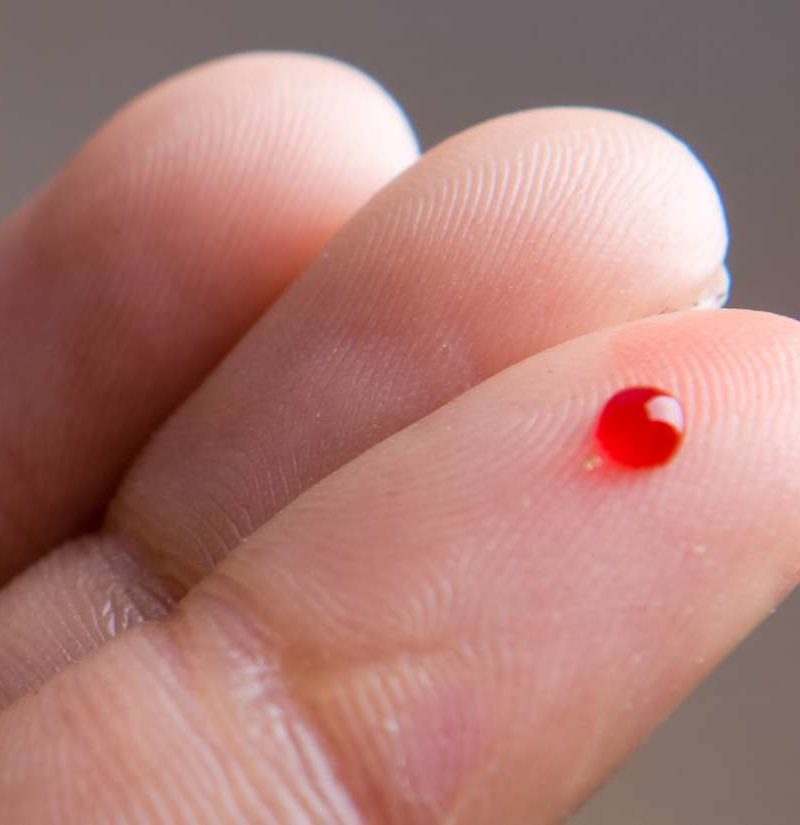Table of Content
Refined carbs have almost no nutritional value and increase the risk of type 2 diabetes and weight gain. Refined carbs are said to have a high glycemic index because they are very easily and quickly digested by the body. In addition to following a low carb diet, physical activity can also help manage diabetes by improving insulin sensitivity. You and your healthcare team can then look back over your results to see if you need to adjust your treatment. Choose which finger to prick but avoid your thumb or index finger . Place the device against the side of your finger and press the plunger.
This allows you to compare results from several days at one time. Take your blood glucose meter to your next doctor's appointment. Compare your results with those of their machine to see if there are any discrepancies. Don't assume that your meter is correctMost meters come with a control solution that allows you to test to see how accurate your meter and strips are. Your range may be different if you have other health conditions or if your blood sugar is often low or high. Do not share blood sugar monitoring equipment, such as lancets, with anyone, even other family members.
How To Reduce The Pain Of Blood Sugar Checks
A CGM uses a sensor inserted under the skin to measure your blood sugar every few minutes. If you use a CGM, you’ll still need to test daily with a blood sugar meter to make sure your CGM readings are accurate. Diabetic people are more likely to experience higher blood glucose levels in the winter than in the summer. Therefore, they should take extra precautions when it comes to temperature variations or seasonal changes.

Checking your blood glucose and maintaining a daily log enables you to adjust foods and medications when necessary to better manage your blood sugar levels. Keeping track of your dog’s results is critical for optimal diabetes management. Keep track of your pet’s blood glucose levels with the Pet Diabetes Tracker app or the online Blood Glucose Curve Tool.
What causes low blood sugar?
Achieving such targets substantially reduces the risks of long-term diabetic complications, but by no means eliminates them. Studies show that many people without diabetes do experience blood sugar levels above 140 mg/dL after meals, but such peaks are usually fairly brief. A 2010 analysis showed that 93 percent of healthy study participants reached or exceeded 140 mg/dL, but they spent a median of just 26 minutes per day at that level.

The spike in blood sugar and subsequent drop you may experience after eating high-glycemic-index foods can also promote hunger and can lead to overeating and weight gain . There are many different symptoms of a hypo, so it’s important that you are aware of the signs in case your blood sugar level gets too low. We’ve also got more information about what to do if you arehaving a hypo. But importantly, it will help you stay healthy and prevent serious diabetes complications now and in the future. By complications, we mean serious problems in places like your feet and your eyes. This happens because too much sugar in the blood damages your blood vessels, making it harder for blood to flow around your body.
What’s the normal fasting blood sugar level range?
If you are doing intense physical activity, then increase your food intake. Your feet and toes may start to lose feeling if you have diabetes. To prevent infections, moisturize your feet but avoid the area in between your toes, and check them frequently. Some, like the popular Dr. Richard Bernstein, have made the latter approach the guiding philosophy of their practices. Pregnant women have stricter glycemic targets, in order to protect the health of mother and child alike. The exceptions to the above targets include children, the elderly, and pregnant women.

Use a different finger each time and a different area. If you have sight problems, you may not be able to use some meters so your healthcare team can suggest alternatives. Your healthcare team will show you how to do the test and it’s important that you’re taught how to do it properly – otherwise you could get the wrong results. Routine checks can help you know when you might be starting to go too low or too high . It’s a way of getting to know your body and how it works. It can help you and your healthcare team spot patterns too.
What Is Diabetes? Why Do I Need a Blood Sugar Test?
Refined carbs have been stripped of almost all nutrients, vitamins, minerals and fiber. When attempting to lower your blood sugar naturally, take the long view. You are talking about a lifestyle change, not a quick fix, says Asterino-McGeean.
If finger pricks are very bothersome for you, don’t worry — there’s hope. Advances in blood sugar monitoring technology could mean no more finger pricks in the future. If you manually log your results, record the date, time, test results, medication and dose, and diet and exercise information.
For instance, if you have a chronic bleeding disorder, that can lead to falsely low readings. Look for slow healing times and a higher number of infections. With diabetes, you'll have more trouble healing cuts than you normally do. For instance, you may notice that a cut just doesn't seem to be healing over, even after a week or two. If you keep seeing unusual results, recalibrate your meter and check the test strips.

You can find these at pharmacies or most big box stores. The chart below shows you the ideal blood sugar ranges for most adults except for pregnant women. Your ideal range may be different from another person's and will change throughout the day, so check with your doctor for your targets. This sensor measures your interstitial glucose level, and then sends the information to a pager-like monitor, or an app on your phone. An alarm sounds if your blood sugar becomes too high or too low.
This article will explore our understanding of “normal” blood sugar by detailing what we know about the blood sugar levels of people without diabetes. It will also explain some of the thinking that experts use to define blood sugar goals for people with diabetes. Illness and infections, as well as other forms of stress, can raise your blood glucose levels.





















